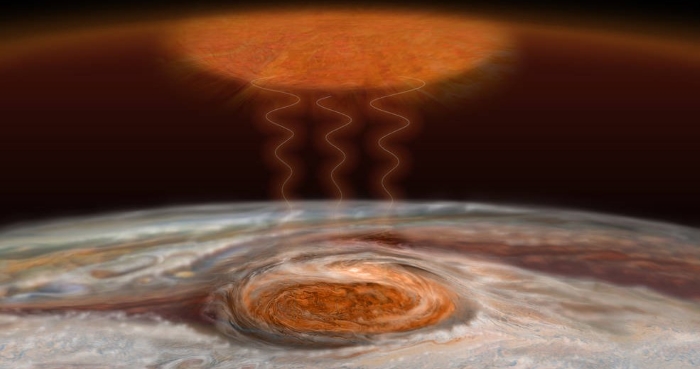Podcast: Play in new window

BOB HIRSHON (host):
Jupiter’s hot spot. I’m Bob Hirshon and this is Science Update.
The largest planet in our solar system is home to its largest storm: Jupiter’s famous “Great Red Spot”, which has been raging for hundreds of years. Now, scientists report in Nature that turbulence from the iconic storm could be heating the gas giant up. Boston University planetary scientist James O’Donaghue says given that Jupiter is more than 480 million miles from the sun, its upper atmosphere should be a frigid minus 100 Fahrenheit.
JAMES O’DONOGHUE (Boston University):
But instead we keep consistently seeing that it’s about 1200 Fahrenheit. And above the Great Red Spot, around 2400 Fahrenheit, so even hotter still.
HIRSHON:
O’Donaghue’s team thinks turbulence from the storm generates waves that travel upward, releasing energy as heat when they hit the upper atmosphere. They say smaller storms on other gas giants may account for temperature anomalies there as well. I’m Bob Hirshon, for AAAS, the science society.
Story by Susanne Bard
